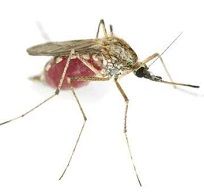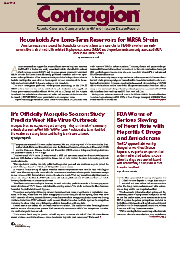It's Officially Mosquito Season: Study Predicts West Nile Virus Outbreak
Mosquito bites are not just itchy and annoying

Temperatures across the US were tracked between 2004 and 2012 along with WNV outbreak data. Lead author Micah Hahn and his colleagues from the National Center for Atmospheric Research (NCAR) and the Centers for Disease Control and Prevention (CDC) recorded intriguing findings that have the potential to predict a WNV surge.
The first case of WNV in the US was detected in 1999 and since then there have been 40,000 diagnoses and over 1,600 deaths. A vaccine against the disease has yet to be created, therefore, determining outbreak markers is crucial.
“Having advance warning can help public health agencies plan and take additional steps to protect the public,” Hahn, a scientist at NCAR and CDC, said in a news release.
A common theme among all regions was that warmer temperatures went hand in hand with higher WNV rates. This was especially recorded in the northeast and southeast where a parallel between an average annual increase of 1.8° Fahrenheit and more outbreaks was found. What may seem like a slight temperature chance also almost doubled the WNV risks in the mid-Atlantic, Midwest, and Great Plains. The team noted, however, that this was not the case in the west.
“Readily accessible meteorological data may be used to develop predictive models to forecast geographic areas with elevated WNV disease risk before the coming season,” the study explained in The American Journal of Tropical Medicine and Hygiene.
The authors spotted a key difference between the east and west coasts when it came to precipitation measures. In the east, when there was below average precipitation during the fall and spring, there were more WNV cases the following summer. However, when there was above average precipitation in the west during that time, that’s when WNV outbreaks would increase. This indicates that the Culex species, the mosquitoes that carry the virus, thrive under different conditions depending on their origin.
Several reasons are behind the outbreak-weather correlation. The conditions affect breeding habitats and the amount of mosquitoes present. Birds can also be transmitters of WNV to mosquitoes, therefore, the weather impacts them as well.
“We’ve shown that it may be possible to build a system to forecast the risk of West Nile virus disease several weeks or months in advance, before the disease begins to peak in summer,” Hahn said.

